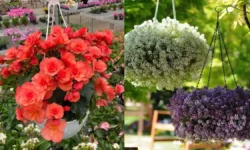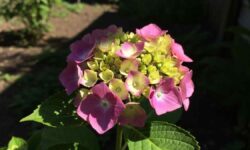Fertilizers are essential for maintaining healthy plants, strong roots, and vibrant growth. Among the many types available, 30-0-3 fertilizer stands out as a popular choice, especially for lawn care. Understanding what this fertilizer is used for and knowing the correct time to apply it can significantly improve plant health and help you achieve lush, green lawns or thriving gardens.
This detailed guide explains the composition of 30-0-3 fertilizer, its ideal uses, and the best application timing for maximum results.
Table of Contents
Understanding 30-0-3 Fertilizer: Composition and Meaning

The numbers in the fertilizer label represent the N-P-K ratio, which stands for nitrogen, phosphorus, and potassium. In the case of 30-0-3 fertilizer, it contains 30% nitrogen, 0% phosphorus, and 3% potassium. Each nutrient plays a different role in plant growth, and the specific ratio of these nutrients determines how the fertilizer impacts plants.
Nitrogen at 30% is the dominant nutrient in this fertilizer. It is crucial for encouraging leaf and stem growth, making it especially important for lawns and leafy plants. High nitrogen content promotes dense, green foliage and supports rapid recovery from stress such as mowing or foot traffic.
The second number, phosphorus, is 0%, meaning this fertilizer does not provide any phosphorus. Phosphorus is typically essential for root development and flower or fruit production, but in many soils, phosphorus levels are already sufficient. Using a zero-phosphorus fertilizer can also be an environmentally friendly choice in regions where phosphorus runoff needs to be controlled to protect water quality.
Potassium, the third nutrient, is present at 3%. While this amount is relatively small, potassium contributes to overall plant health by enhancing disease resistance, improving drought tolerance, and strengthening roots.
This unique ratio makes 30-0-3 fertilizer particularly effective for lawns and established plants that need a strong nitrogen boost but do not require additional phosphorus.
What Is 30-0-3 Fertilizer Used for?
Ideal Application for Lawns
The most common use of 30-0-3 fertilizer is for lawn care. Lawns benefit greatly from high nitrogen fertilizers because they stimulate lush, green growth and help grass develop a thick, healthy turf. The 30% nitrogen content is quickly absorbed by the grass, resulting in a vibrant and uniform appearance.
The small amount of potassium plays a supporting role, increasing the lawn’s resilience against diseases and environmental stress. Potassium helps strengthen the cell walls of grass blades, making them better able to withstand heat, cold, or drought conditions.
Since there is no phosphorus, this fertilizer is best suited for established lawns with healthy root systems. Young or newly seeded lawns, which require phosphorus for root development, may not benefit from this type of fertilizer.
Use in Gardens and Landscapes
Although it is primarily designed for lawns, 30-0-3 fertilizer can also be used for certain garden plants, especially those that thrive on nitrogen-rich soil. Leafy vegetables such as spinach, kale, and lettuce respond well to high nitrogen levels, producing abundant, tender leaves.
Ornamental plants that are grown for their foliage rather than flowers can also benefit from this fertilizer. The extra nitrogen ensures vigorous leaf growth, while potassium helps improve overall plant health and stress resistance.
However, for flowering or fruiting plants, 30-0-3 fertilizer may not be ideal due to the lack of phosphorus. Plants that need phosphorus for flower and fruit development should receive a balanced fertilizer with all three nutrients.
Environmental Benefits of Using Zero-Phosphorus Fertilizer
Many regions have strict regulations on phosphorus use due to its contribution to water pollution. Excess phosphorus can run off into lakes and rivers, causing algal blooms and harming aquatic ecosystems. Since 30-0-3 fertilizer contains no phosphorus, it is an environmentally responsible option for lawn and garden care in these areas.
By using this fertilizer, homeowners can maintain healthy lawns while minimizing their impact on local waterways. It also helps avoid over-fertilization, which is common when using fertilizers that include nutrients the soil does not need.
When to Apply 30-0-3 Fertilizer Best
Understanding Seasonal Timing
The best time to apply 30-0-3 fertilizer depends on plant growth cycles and seasonal conditions. For lawns, the optimal periods are during active growth phases, typically in early spring and early fall. Spring application jump-starts grass growth after winter dormancy, giving lawns a strong start to the growing season. Early fall application helps grass recover from summer stress, strengthening it before winter.
Applying during these active periods ensures that plants can absorb and utilize the high nitrogen content effectively, promoting steady, healthy growth.
Avoiding Dormant or Stressful Periods
Avoid applying 30-0-3 fertilizer during dormant periods or extreme weather conditions. Fertilizing in late winter or late fall, when plants are not actively growing, is ineffective and may lead to nutrient loss through runoff or leaching.
Hot summer months are also not ideal for applying high-nitrogen fertilizers, as rapid top growth can stress the plants when water availability is limited. Over-fertilizing in hot weather may also increase the risk of burning grass or other plants.
Importance of Soil Testing Before Application
Before applying 30-0-3 fertilizer, conducting a soil test is highly recommended. Soil testing determines nutrient levels, organic matter content, and pH, helping you decide whether this fertilizer is the right choice. If soil phosphorus levels are low, a fertilizer with phosphorus may be necessary instead.
A soil test also helps you adjust the frequency and amount of fertilizer, preventing over-application and reducing the risk of environmental damage.
How to Apply 30-0-3 Fertilizer Correctly
Preparing the Lawn or Garden
Proper preparation ensures that 30-0-3 fertilizer works effectively. For lawns, mowing the grass before fertilization allows better contact between the fertilizer and soil. For gardens, loosening the soil surface can help nutrients reach the root zone more quickly.
Using a broadcast or drop spreader is the best method for even fertilizer distribution. Uneven application can result in patchy growth or fertilizer burn, which can harm plants and create an unattractive lawn appearance.
Watering After Fertilization
Watering after applying 30-0-3 fertilizer is essential for nutrient absorption. It helps dissolve the fertilizer granules and carry nutrients into the soil where roots can access them. Proper watering also reduces the risk of fertilizer burn, especially with high nitrogen levels.
However, excessive watering should be avoided as it may wash away nutrients before plants can absorb them, reducing fertilizer effectiveness.
Frequency of Application
The frequency of application depends on the type of plants, soil fertility, and growing conditions. For most lawns, applying 30-0-3 fertilizer two to four times per growing season is sufficient to maintain green, healthy grass. More frequent applications may be needed for heavily used or fast-growing lawns, but over-fertilization should always be avoided to prevent nutrient buildup and environmental harm.
Benefits and Drawbacks of 30-0-3 Fertilizer
Key Advantages
The biggest advantage of 30-0-3 fertilizer is its ability to produce fast, lush green growth, making it a favorite for lawn enthusiasts. The added potassium enhances plant resilience, helping grass recover quickly from environmental stress.
The absence of phosphorus makes it environmentally friendly, reducing the risk of water pollution. It is also suitable for use in areas where phosphorus application is restricted or where soil phosphorus levels are already sufficient.
Limitations to Consider
Despite its benefits, 30-0-3 fertilizer is not ideal for all plants. Because it lacks phosphorus, it may not support root development in young plants or flowering and fruiting in ornamental or edible plants.
Overuse of high nitrogen fertilizers can also lead to excessive leaf growth at the expense of root health, making plants more susceptible to pests and diseases. Therefore, careful planning and proper timing are essential for getting the best results.
Environmental and Safety Considerations
Using fertilizers responsibly protects both plant health and the environment. Always follow manufacturer recommendations for application rates and timing to prevent nutrient runoff. Store fertilizers in a dry, secure place away from pets and children, and wear gloves when handling to avoid skin irritation.
By choosing a zero-phosphorus fertilizer like 30-0-3 and applying it correctly, you can enjoy a green, healthy lawn while contributing to sustainable gardening practices.
FAQs about 30-0-3 Fertilizer
What does 30-0-3 fertilizer mean?
30-0-3 fertilizer contains 30% nitrogen, 0% phosphorus, and 3% potassium. This high-nitrogen ratio is designed to encourage lush, green leaf growth and strong plant health.
Is 30-0-3 fertilizer good for all plants?
It is ideal for established lawns and leafy plants that need nitrogen. However, it may not be suitable for young plants or flowering crops that require phosphorus for root and flower development.
When is the best time to apply 30-0-3 fertilizer?
The best time is during active growth periods, such as early spring and early fall. Avoid applying during dormancy or in hot, dry weather to prevent stress and nutrient loss.
Can 30-0-3 fertilizer be used in vegetable gardens?
Yes, but it works best for leafy vegetables like spinach, lettuce, and kale. Fruiting and flowering vegetables may need additional phosphorus for optimal production.
How often should 30-0-3 fertilizer be applied?
For lawns, applying two to four times per growing season is common. The frequency depends on soil fertility, grass type, and growing conditions, so soil testing is recommended.
Conclusion
30-0-3 fertilizer is a high-nitrogen, low-potassium, and zero-phosphorus formulation ideal for lawns and other plants that need vigorous leaf growth. Its unique nutrient ratio promotes dense, green turf while supporting overall plant health with a touch of potassium. The absence of phosphorus makes it environmentally safe and suitable for regions with strict phosphorus regulations.
The key to success with 30-0-3 fertilizer lies in applying it at the right time, typically during active growth seasons like early spring and early fall. Proper soil preparation, even application, and post-fertilization watering are also crucial for achieving the best results.
By understanding what 30-0-3 fertilizer is used for and when to apply it best, you can maintain a lush, healthy lawn or garden while practicing environmentally responsible fertilization.






